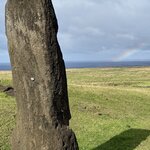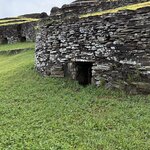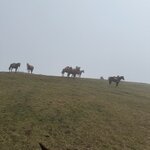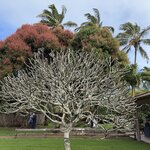
Easter Island Exploration - 5 Days

Highlights
- Explore the streets of Santiago, Chile's cosmopolitan capital
- Visit Easter Island and learn the secrets of the moai, the great stone idols found nowhere else on earth
- Learn about ancient Polynesian culture and history
Brief Itinerary
| Day | Highlights | Overnight |
|---|---|---|
| Day 1 | Arrival in Santiago de Chile | Santiago |
| Day 2 | Fly from Santiago to Easter Island | Easter Island |
| Day 3 | Easter Island: Rapa Nui Full-Day Tour | Easter Island |
| Day 4 | Easter Island: Orongo & Ahu Akivi | Easter Island |
| Day 5 | Easter Island to Santiago & Departure |
Detailed Itinerary
Day 1: Arrival in Santiago de Chile

Welcome to Chile! Upon arrival at Santiago International Airport, a driver will meet you and transfer you to your hotel. You'll have the rest of the day to explore the city at your leisure.
Suggested activities include:
-
Hike to the top of Cerro San Cristobal, the most magnificent viewpoint in Santiago. When visiting any new city it's a good idea to get your bearings by surveying the area from a high vantage point. Pathways lead 850 meters (2,788 feet) up this central hill to a series of lookouts that offer wraparound views of Santiago. Enjoy the reconnoitering, and if you aren't the hiking type not to worry: you can catch a scenic gondola to the top.
-
Stroll the cobblestone streets of Barrio Bellavista. On the north side of Santiago, you'll find this trendy enclave, at once fashionable and bohemian. Brightly painted old houses adorned with graffiti art sit alongside modern shopping complexes featuring an eclectic array of eateries and bars. It's a great place to come for dinner out, a glass or two of Chilean red, and people watching from a patio table.
-
Visit the Plaza de Armas, located in Santiago's historic center. There's a lot of history within the four corners of this expansive stone plaza, as it was founded all the way back in 1541. Also here is the impressive Catedral Metropolitana, a neoclassical church dating to 1748 and whose towering twin bell towers dominate the north side of the plaza.
- Snap pics in front of the Palacio de la Moneda. Chile's opulent Presidential Palace (known simply as "La Moneda") is just a short stroll from the Plaza de Armas, and like the plaza, it's filled with history. It was here in 1973 that Chile's armed forces, backed by the U.S. government, overthrew President Salvador Allende, kicking off a brutal right-wing military dictatorship that would last for 17 years. Today the country is under democratic rule, and visitors are welcome to visit the palace.
For dinner be sure to get out of the hotel and enjoy a culinary adventure in the city. In recent years Santiago has emerged as a global foodie destination. Chilean chefs are reinventing traditional dishes like empanadas, cazuelas (stews), and seafood with ingredients harvested all the way from the northern deserts and southern Patagonian regions. You can find great restaurants and wine bars not only in the Bellavista neighborhood but also in the revitalized historic barrios of Yungay and Italia.
Day 2: Fly from Santiago to Easter Island

Today you'll arrive at the most remote inhabited land in the world: Rapa Nui, or Easter Island as it's commonly known. After breakfast, you'll transfer from your hotel to the airport where you'll catch a flight to the island. The flight time is three hours, so you'll arrive on Rapa Nui with most of the afternoon to spare. After transferring to your hotel and checking in, you can spend the remainder of the day exploring.
There are around 600 stone figures, or moai, on this island some of which reach 10 meters in height. You’ll find many of them standing on the stone ahu (ceremonial pillars) that dot the island’s green hillsides. They were fashioned out of volcanic rock by obsidian tools by the first settlers from Polynesia sometime after they arrived in 800 CE. The figures themselves represented deceased leaders of the five tribes that once inhabited the island and supposedly offered spiritual protection. Around the 16th century the islanders exceeded their natural resources, and as a result of famine and war they tore down many of the idols, having believed them to have outlasted their usefulness.
By the 19th century Europeans, smallpox, and slavery arrived, wiping out some of the population while more emigrated to Tahiti to work on the plantations. Eventually, the population rebounded and Rapa Nui was annexed to Chile in 1888. Today locals are governed ostensibly under the oversight of a council of indigenous chiefs.
Some recommended activities on the island include:
-
Explore Hanga Roa. This is the main town on Easter Island. There are just over 3,000 residents here, which comprise 87% of the island's inhabitants. Hanga Roa has a small-town coastal vibe and you can find restaurants serving unique food like ceviche, empanadas stuffed with fresh tuna, po'e (a pumpkin and plantain cake), and taro ice cream.
-
Visit the Museo Antropológico Sebastián Englert. For an intro to island life, come to this anthropological museum and view exhibits celebrating the indigenous patrimony, such as ancient tools, totems, sculptures, and more.
- Take a hike outside of town to Ahu Tahai, one of the aforementioned ceremonial altars, this one fronts the ocean. Here there are some moai as well as caves nearby. It also makes a great sunset-viewing spot.
Chat with a local specialist who can help organize your trip.
Day 3: Easter Island: Rapa Nui Full-Day Tour

After breakfast, you will embark on a full-day tour of the island. It's an informative journey that will shed light on Rapa Nui's famous archeological sites. You'll start at Ahu Te Pito Kura, a unique rock structure featuring a central stone that, legend has it, was brought over by a king of the first tribes and supposedly still emits spiritual power.
Then it's off to Rano Raraku, an impressive volcanic crater, at the base of which you will find many moai. After that, you'll enjoy a delicious snack at Ahu Tongariki, which is considered the biggest ceremonial platform on the island. Here there are fifteen moai displayed in a row. After touring the site, you'll visit another ceremonial platform called Ahu Akahang and finish the day at the beautiful white-sand beach of Anakena.
Day 4: Easter Island: Orongo & Ahu Akivi

In the morning, you'll travel a few minutes to the southwest corner of Rapa Nui and the remains of the village of Orongo. Located on the rim of an inactive volcano called Rano Kau, this area enjoys a special place in the island's history as it was the principal site of what's known as the "Birdman" era. The cult of the Birdman was the belief system that took root on Rapa Nui in the 1500s after locals mostly gave up on the moai due to war and famine.
The cult of the Birdman was also a contest. In order to appease their deity, called Meke-Meke, islanders would hold an annual competition to see who be crowned the next chief. The contest involved a group of men swimming to two nearby islands and waiting some time until terns laid their first eggs of the season. Whoever returned with the first egg became chief for a year (the "Birdman") and Orango was the ceremonial village in which he was crowned.
You will not only visit the village and the volcano but also a cave by the sea known as Ana Kai Tangata. Inside this cave, you'll see petroglyphs done by the ancient inhabitants of the island. This excursion ends in the early afternoon and concludes the first tour of the day.
The second tour involves a trip about a mile inland to visit Ahu Akivi. This ahu is unique in that, not only is it home to seven moai, but in ancient times it also doubled as a celestial observatory. That's right, this is where islanders came to stargaze. An interesting feature is that the seven moai all face sunset during the spring equinox and their backs are to the sunrise during autumn. While here you'll take a short hike to two other archaeological sites: the cave of Ana Te Pahu, the largest cavern on Rapa Nui, and the Puna Pau volcano, which for ancient islanders doubled as a quarry in which they extracted the rocks necessary to carve the moai.
Orongo Tour Duration: Half day
Ahu Akivi Tour Duration: Half day
Day 5: Easter Island to Santiago & Departure

This marks your last day on the island. Depending on your flight schedule, you should have some time to explore Rapa Nui a bit more before transferring to the airport. Once you do, you'll hop a flight back to Santiago and catch your connecting flight home.






